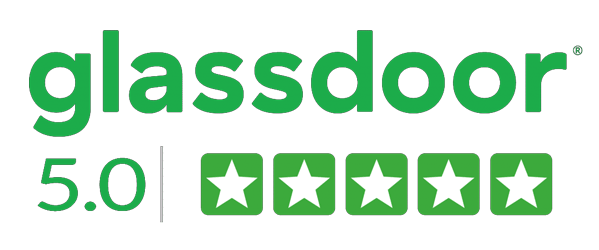
Many business owners and managers suffer time theft, which is the usage of work hours in a less efficient way, which makes tasks take longer to get done, and the general status of slothfulness will control the employees. So, what are the factors that make employees more productive? And how to provide them?
What Is Employee Productivity?
High employee productivity means efficient use of resources, which are time and effort, that results in high-quality, accurate deliverables that are free of mistakes and completed within the time frame assumed.
If a manager waits for an x number of deliverables from an employee during a specific period, and the employee delivers less than x, then the productivity is low; if the employee went the extra mile and exceeded the manager’s expectations, then the employee productivity is extra high.
Employee Productivity vs Effectiveness
Before we go through the importance of productivity, we shall differentiate between two expressions that cause many misconceptions. Is there a difference between productivity and effectiveness? The relation between them is complimentary, as productivity concerns more about the amount of work done during a certain amount of time. At the same time, effectiveness refers to the efforts consumed during that time. High effectiveness results in increased productivity.
Why Focusing on Employee Productivity Is Important
A productive workplace is healthier and allows employees to reach their career goals and achievements in the company. Productivity creates hungry employees for self-development and acquiring new skills. This makes every employee loyal to the business and won’t leave it quickly. On the other hand, customer satisfaction will increase for the best quality and care services they receive.
How to Increase Employee Productivity
Many professionals are always looking for ways to improve their team’s productivity to create a suitable work environment, either on-site or remote, which has the potential to make more effort. Here are some hacks to get:
Always Inspire Your Employees
Like a conductor, you always need to know the best way every individual employee should follow using his instrument to make the symphony have the right rhythm and produce the required sounds. That’s why you should guide your employees to the vision the business needs to achieve, lead your team individually and let them know their roles and objectives from a bigger-picture view.
Personalise Dealing With Each Employee
Inspiring the employee requires better knowledge of the strengths and weaknesses, these elements could be perfectly analysed through the SWOT matrix. Based on this matrix of each employee, you can put employees with common weaknesses and strengths in categories to set the suitable motivation methods that will result in higher productivity.
Properly Build Your Team
Building a cooperative team is always a cornerstone for productivity. If an individual gets bored or less productive, his colleagues will motivate him to work hard, how could you reach this condition? Simply, make team-building exercises part of the work environment. During breaks, use part of the time in games that trigger enthusiasm, teamwork, creativity, and problem-solving, this makes your team energetic all the time.
Put Deadlines and Bound Expectations
Setting cleared deadlines linked to other tasks deadlines, forming a network of dependent and independent tasks, and always motivating all team members to complete their tasks before forming any bottlenecks. Draw the expectations for your employees to avoid overperforming or underperforming, to deliver you just the right amount of productivity. As for meetings, employees should know their reasons, items to be discussed, and expected outcomes.
Celebrate Your Employee’s Accomplishment Regardless of Its Size
Feeling thankful for your employees’ work can always encourage them to give more. Every reward, gift, or appreciation you offer is the best way that puts in your employee’s subconscious, “Continue the good work”. Make a wall of honour, innovate a shoutout, or give them the Employee of the Month award. It’ll be like magic.
How to Measure the Productivity of Employees
There are several methods to measure employee productivity. One of the most effective tools to determine each employee’s productivity is to use a Task Tracking System.
Here, you can determine how many tasks the employees have fully completed during each month. Based on the length of each task, its degree of importance, and the profit it could achieve, the task is given a rank out of 10. To determine the total rank, you should add the values of all tasks.
Another effective productivity method is to put specific objectives and KPI metrics for each task, after the employee completes the task, you check the percentage that the employee has covered the required goal.
What Is the Average Productivity of an Employee?
According to a study conducted in the UK, collected information from 1,989 UK office workers, an average employee’s net productive hours during an 8-hour working day is only 2 hours and 53 minutes, less than 3 hours! While the Bureau of Labor Statistics stated that the average American employee spends 8.8 productive hours daily.
What could be the significant distractions that decrease employee productivity?
Modern workplaces are naturally productive consumers. They make every employee get distracted by others because of the open space regime applied since the last century. Open spaces allow employees to chat more. According to the mentioned study, 40 minutes is the assumed period an employee spends discussing non-work-related things with co-workers.
Reading newspapers for the sake of the news or job vacancies is a problem employers suffered decades ago. Now newspapers turned into social media, news websites, and LinkedIn; these distractions consume more than 2 hours and 11 minutes.
Using mobile devices made communication easier; that’s a pro. However, the con is that receiving personal phone calls and text messages has become much more accessible; this consumes more than 32 minutes of each working day.
Factors Affecting Employee Productivity
The factors that affect productivity vary in their sources, nature, and way of dealing with them. We could simply categorise them into two types of elements, internal factors that we could control and other external factors that we can not influence.
Employee Mental Health
Protecting your employees from too much stress will keep their productivity more stable. Tensions could transfer your employee into a status of burnout that would severely affect your business.
The part that you can’t control as a manager comes from the employee’s personal life, and he has other stresses outside the workplace that he should deal with. However, your role is to guide him to keep these stresses outside and never let them in, except for an issue the HR department can help him with.
Workflows
When an operation becomes more difficult to manage, engage with, or complete, your team’s energy gets drained faster, negatively affecting other work processes your business needs. It’s an internal factor you can diminish its areas of effect by making every task as simple as it could be, where it is reviewed, modified, and finally delivered. Define each step, put clear borders, and implement as fast as possible to save effort and time.
Work Environment
Whether the work is on-site or remote, the environment that the employee works in is an essential element for productivity. You should introduce a calm atmosphere at the office that helps employees reach a deep working status. Everyone knows every task he should work on, and using a task management system will always diminish chats and side talks.
Setting a meeting should be conservative, where there is an urgent, important, or new matter to illustrate and discuss with your team.
In the case of remote work, contrary to on-site work, more communication is preferable to protect your employees from the feeling of working on deserted islands, and more meetings are encouraged here to remind employees of the business compass direction from time to time.
You have to check the elements that compose the remote employee’s workspace. Does it have a strong network? Is it a suitable environment for work? You should give your employee advice and recommendations to help him work better and be more productive.
Does Employee Happiness Have an Impact on Productivity?
The answer to this question is simply “yes”. According to research conducted by Oxford University’s Saïd Business School, in collaboration with British multinational telecoms firm BT, it has proved that happy employees work harder and produce more by 13%. Another study from the University of Warwick stated that happiness made people around 12% more productive. Then, Happy employees are 12.5% more productive on average.
How to Make Employees Happier in the Workplace
One of the factors that make happy employees is appreciation. When employers listen carefully to the employees’ ideas, suggestions, recommendations, or complaints, this easy attitude makes employees more comfortable. One of the research groups showed that nearly 79% of employees stated in their exit interviews that they didn’t find the appreciation they looked for.
As well as having a good boss who manages his team fairly and reasonably organises tasks is one of the factors that make employees happier. 57% of employees, who quit their jobs, had a bad boss.
A creative incubating work environment not only results in happier employees but also increases employee retention, so you can guarantee that the best talents will stay with you. In the end, employee satisfaction and happiness increase customer loyalty.
Does Employee Monitoring Increase Productivity?
Being monitored wouldn’t be an acceptable action for employees who don’t properly do their job. However, those who already put the maximum effort into their work wouldn’t matter to them whether they are monitored or not.
A Massachusetts Institute study found an increase of 7% happened in profit when employees knew they were monitored. Companies who use staff monitoring systems proved they have a higher daily activity by 10% compared to those that don’t. Employees completed their tasks within a period of time 75% of the regular time they consumed.
Although monitoring employees, especially those who work remotely, has advantages, it also has disadvantages, like consuming some time in reviewing and analysing the recorded data of the monitored employees.
How to Calculate the Productivity of an Employee
In On mentioning productivity, everybody thinks of money, in other words, what profit the business gains from current performance. For example, a business has gained this month a net profit of 160,000 £, the total number of employees is 100, and the number of hours each has worked this month is 160 hours.
To calculate the average productivity every employee delivers, we will do the following:
Net Profit/(Number of employees X Number of hours) = 160,000/(100X160)=10£/employee/hr.
Need Further Help
If you need effective HR services that optimise your staff productivity, Whitcollars can help you with that. Learn more about our HR solutions, and choose the best one that suits you!


